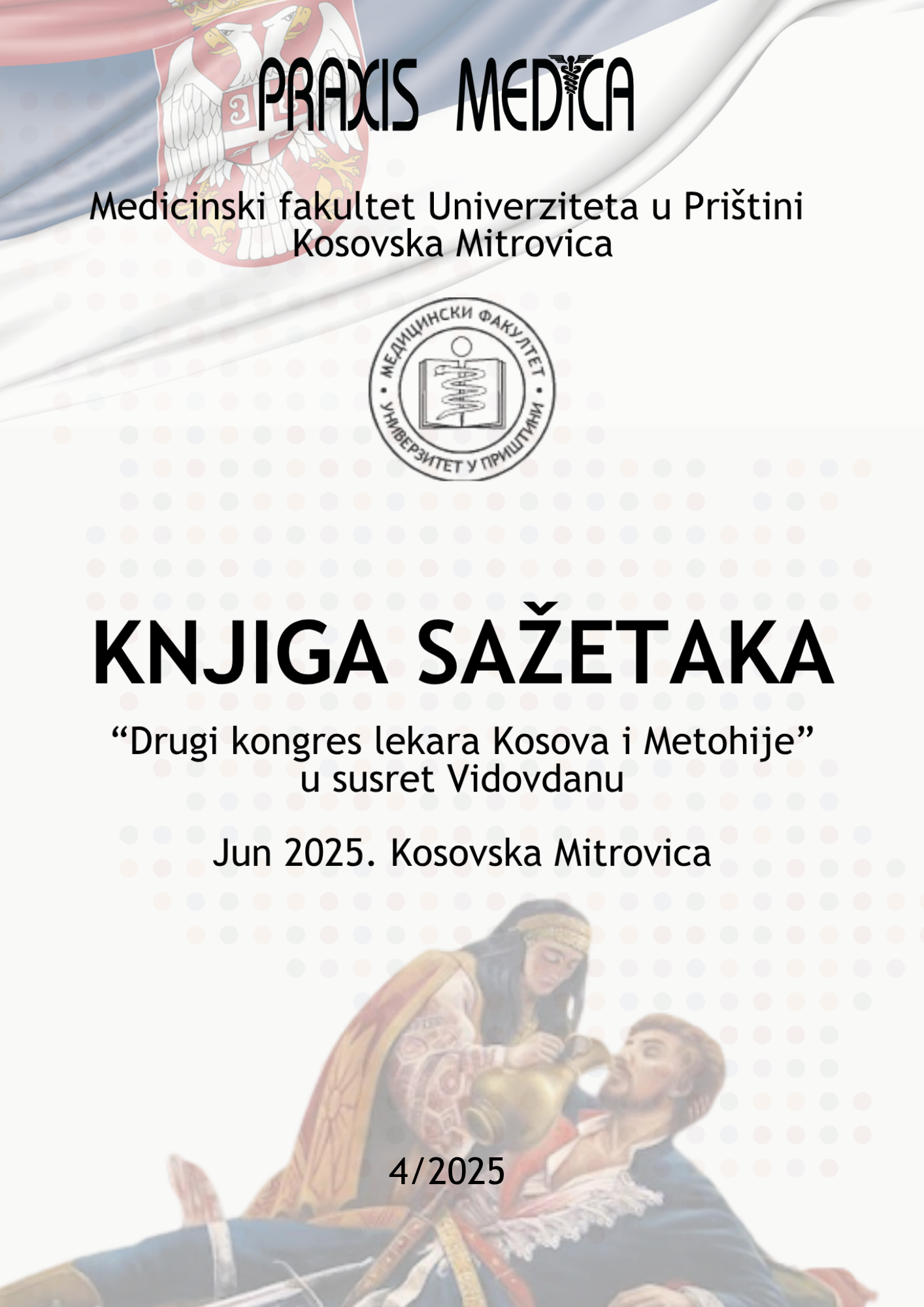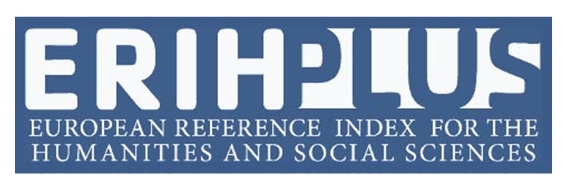Current issue

Volume 53, Issue 4, 2025
Online ISSN: 2560-3310
ISSN: 0350-8773
Volume 53 , Issue 4, (2025)
Published: 30.06.2025.
Open Access
All issues
Contents
15.02.2025.
Case Reports
IDIOPATHIC PULMONARY HYPERTENSION – CASE PRESENTATION
Pulmonary hypertension (PH) is a hemodynamic condition characterized by a mean pulmonary artery pressure (mPAP) ≥ 25 mmHg at rest, pulmonary arterial wedge pressure (PAWP) ≤ 15 mmHg, and pulmonary vascular resistance (PVR) > 240 dyn·s·cm⁻⁵. The annual incidence of pulmonary arterial hypertension (PAH) is approximately 3–10 new cases per million adults. It is estimated that the prevalence of pulmonary hypertension in individuals over 65 years of age is around 10%.The aim of this study is to present the case of a female patient with progressive dyspnea in whom PAH remained undiagnosed for a prolonged period.A 74-year-old female patient, M.P., was hospitalized in the Coronary Care Unit of the Clinical Center in Kosovska Mitrovica due to symptoms of shortness of breath, choking, fatigue, leg swelling, and weakness. The admission ECG revealed: sinus rhythm, normal axis, high R wave in V2, ST depression, and negative T waves in leads II, III, aVF, and V4–V5. Echocardiography findings showed right ventricular enlargement (2.9 cm), pulmonary artery dilation (3.3 cm), 1–2+ pulmonary regurgitation, and 3+ tricuspid regurgitation, with a systolic pulmonary artery pressure (SPAP) of up to 126 mmHg. The right ventricle measured 5.3 cm in the 4Ch view, with a TAPSE of 1.8 cm. Right heart catheterization revealed the following pressures: PA 78/34/57 mmHg, RV 74/8/10 mmHg, RA 6/6/7 mmHg, CO 4.3 l/min, and LV 99/10/8 mmHg. Although primary pulmonary hypertension is predominantly a disease of younger individuals, it should also be considered in older patients presenting with progressive dyspnea in the absence of structural heart disease.
Kristina Bulatović, Vladan Perić, Maja Šipić, Jovana Milošević, Erdin Mehmedi, Sanja Jovanović
01.12.2020.
Professional paper
A new scoring system for Covid-19 in patients on hemodialysis: Modified Early Warning score
Introduction. At the very beginning of the Corona virus epidemic there was not enough data on whether hemodialysis patients have a higher risk for Corona virus infection and which factors may affect the severity of clinical picture. Objective. The aim of the study was to determine the significance of the Modified Early Warning Assessment (MEWS) score for the assessment of coronavirus disease exacerbation. Methods. The research was conducted in COVID dialysis, as a retrospective, descriptive-analytical study, at the University Clinical Center Kragujevac, Serbia, which was organized ad-hoc for treatment of SARS-Cov-2 infection positive patients, which are transfered from Center for Hemodialysis "Ćuprija". They were evaluated routine laboratory findings, demographic and gender structure, arterial blood pressure, presence of comorbidities and residual diuresis, duration of dialysis, radiological evaluation of lungs, determination of MEWS score were the parameters that were monitored. The results were monitored on admission and and in the end of treatment. Results. A statistically significant difference was registered in serum lactate dehydrogenase concentration (486 ± 107.62 vs. 423.7 ± 92.4 U/L); p = 0.022 and absolute monocyte count (0.46 ± 0.15 vs. 0.67 ± 0.34 x 103; p = 0.008). The significant increase in MEWS score was also found (b = 0.017; p = 0.030). There was a positive correlation between increase of MEWS score and age (b = 0.027; p = 0.002) and arterial hypertension as a concomitant comorbidity (b = 0.700; p = 0.033). Conclusion. In the observed period, there was a significant increase in the degree of MEWS score of dialysis patients who had SARS-Cov-2 infection.
Radojica Stolić, Dragica Bukumirić, Milena Jovanović, Tomislav Nikolić, Tatjana Labudović, Vekoslav Mitrović, Kristina Bulatović, Saša Sovtić, Dušica Miljković, Aleksandra Balović, Roksanda Krivcević, Sanja Jovanović
01.12.2019.
Professional paper
Oral health in patients with chronic kidney disease
Objective: In the available literature data, there is not much information about problems of patients with end stage kidney disease in relation to oral health. Our objective was to show the importance of oral diseases for patients on hemodialysis. Data sources: In this review article, the sources of data are review articles and scientific articles in the English language published in MEDLINE database. The choice of studies was based on keywords: Chronic kidney disease, Hemodialysis, Oral health, Periodontal diseases. Results: It is assumed that almost 90% patients with chronic kidney disease manifest some symptoms of oral disease. Therefore, it is important to determine the impact of periodontal disease on the progression of kidney failure in these individuals, to evaluate inflammatory parameters in this patient population, to assess the degree of bone loss and periodontal disease index, to determine the presence of bacterial strains, paradontopathy of gingival fluid and antibody titers, to examine correlations of proinflammatory cytokines in the gingival sulcus and serum, as well as to determine the relationship between periodontal tissue and inflammatory mediators. Periodontal diseases can increase the possibility of developing chronic kidney disease by 1.5 to 2 times. These oral diseases include gingival hyperplasia, periodontitis, xerostomia, unpleasant breath, changes in the oral mucosa, malignancies, oral infections, dental abnormalities and bone lesions. Conclusion: This requires serious cooperation between nephrologists and dentists to make proper communication possible, in order to provide quality dental care for this growing patient population in accordance with new treatment strategies.
Radojica Stolić, Vekoslav Mitrović, Naja Suljković, Dušica Miljković-Jakšić, Aleksandra Balović, Roksanda Krivčević, Sanja Jovanović





